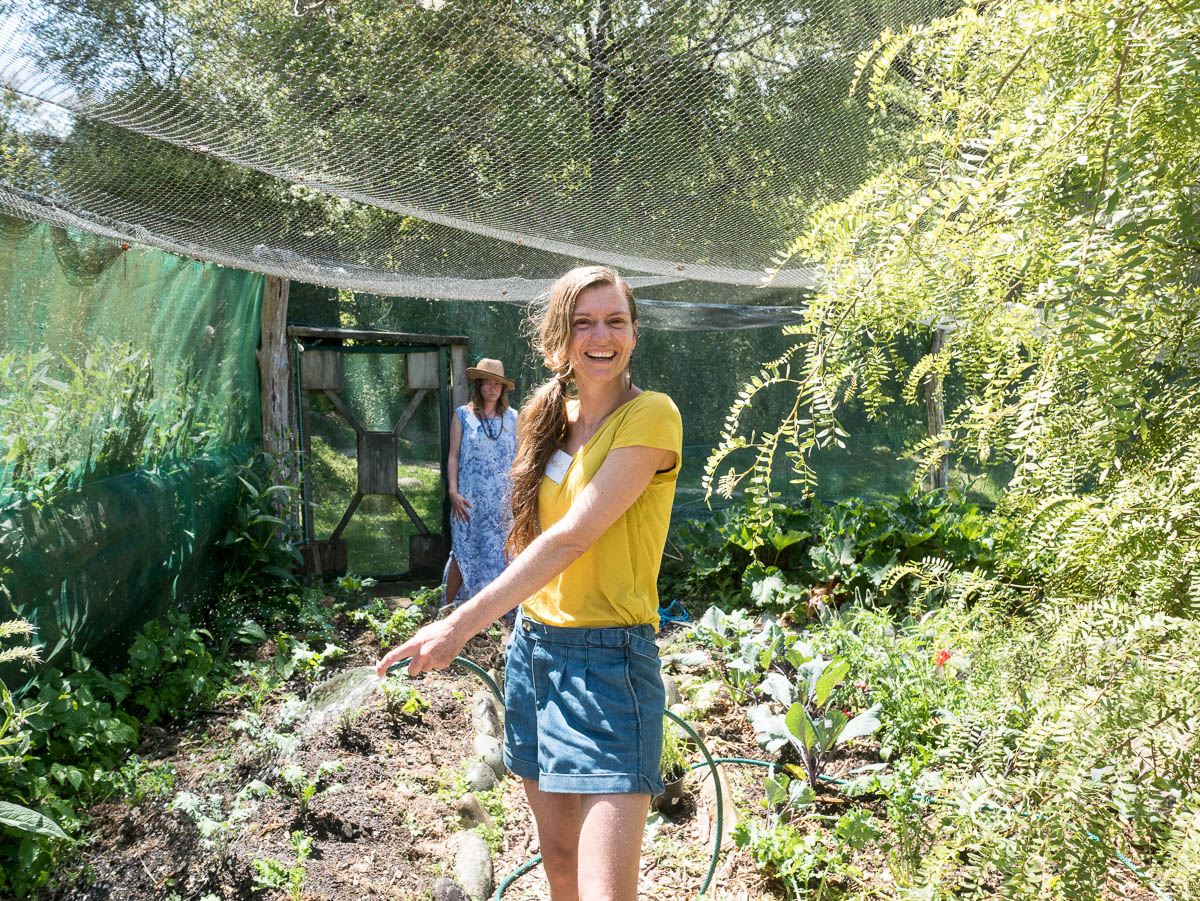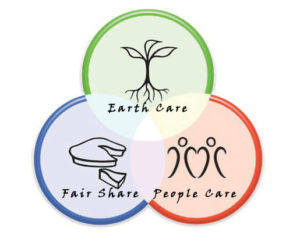
Yoga and Permaculture: Addressing the Internal and the External
It is no secret that the external environment is in danger from global warming, pollution and a myriad of chemicals. In this changing climate, our inner world can also fall under threat. We can easily spin out of control from disturbed emotions, disease, toxins and negative thinking. Now, more than ever we are in need of holistic solutions and practices to help guide us as we move forward.
Permaculture Principles and Yoga

There are 12 key design principles of Permaculture. As we look through the 12 principles we will explore how some of them can also be applied to our internal world through the practice of yoga:
- Observe and Interact-
This is the first permaculture principle. By taking the time to engage with nature we can design solutions that suit our particular situation. Just as we must pay attention to our external environment, it is also important to pay attention to our internal environment; our bodies and our minds. The yogic practice of Antar Mona can help us to observe our thoughts in a conscious way.
- Catch and Store Energy-
By developing systems that collect resources when they are abundant, we can use them in times of need. We can also conserve our own energy through restorative practices such as Yoga Nidra, which allow our bodies to relax and regenerate.
- Obtain a yield-
This principle is about ensuring that you are getting truly useful rewards as part of the work you are doing. With consistent Yoga practice you will also be able to see an abundance of valuable results in body, soul and mind.
- Apply Self Regulation and Accept Feedback-
Discouraging inappropriate activity ensures that systems can continue to function well. Negative feedback is often slow to emerge. We can also observe and modify our own dysfunctional behavior through Swadhyaya (Self Study). Observing our Strengths, Weaknesses, Aims and Needs through SWAN practice is an amazing tool.
- Use and Value Renewable Resources and Services-
This principle speaks to reducing our dependence on scarce resources and making the best use of nature’s abundance. In a similar light, Yoga asks us to stop looking outside of ourselves and access our own infinite and abundant energy sources.
- Produce No Waste-
By valuing and making use of all the resources that are available to us, nothing goes to waste. We must also stop wasting our vital energy and use a variety of practices that focus on extending the capabilities of our body and mind. Humans are very capable of increasing their brain capacity.
- Design From Patterns to Details-
By stepping back, we can observe patterns in nature and society. These can form the backbone of our designs, with the details filled in as we go. We can also pay attention to our own patterns through daily reflection and meditation.
- Integrate Rather Than Segregate-
By putting the right things in the right place, relationships develop between those things and they work together to support each other. Yoga is not something to be practiced on the mat and left there. It can and should be integrated into our daily life and attitude so that we can gain maximum benefit. When we practice in larger groups or attend ashrams we can also become part of a Sangha (Spiritual Community).
- Use Small and Slow Solutions-
Small and slow systems are easier to maintain than big ones. They make better use of local resources and produce more sustainable outcomes. It seems in the modern world, we always want the quick fix to our problems. However, Yoga like Permaculture prioritises simplicity. It is important to have a sustained practice and work your way up to complexity. It is often the simple practices that have the most profound effect.
- Use and Value Diversity-
Diversity reduces vulnerability to a variety of threats and takes advantage of the unique nature of the environment in which it resides. In Yoga there are so many wonderful practices and elements to integrate and benefit from; doing Karma Yoga or singing Kirtan is just as important as Asana and Meditation!
- Use Edges and Value the Marginal-
The interface between things is where the most interesting events take place. These are often the most valuable, diverse and productive elements in the system. In a similar sense, it is often the areas we pay less attention to that are able to offer us the greatest lessons.

- Creatively Use and Respond to Change-
We can have a positive impact on inevitable change by carefully observing and then intervening at the right time. We humans are ever changing and evolving beings, we must respond to our own evolution creatively and peacefully.
![]()
Yoga and Permaculture offer many incredible tools to inspire us on a holistic path of looking after ourselves and everything that is around us. At Anahata Yoga Retreat we have an upcoming Deep Ecology & Yoga Retreat coming up. Please click here to learn more about it.
